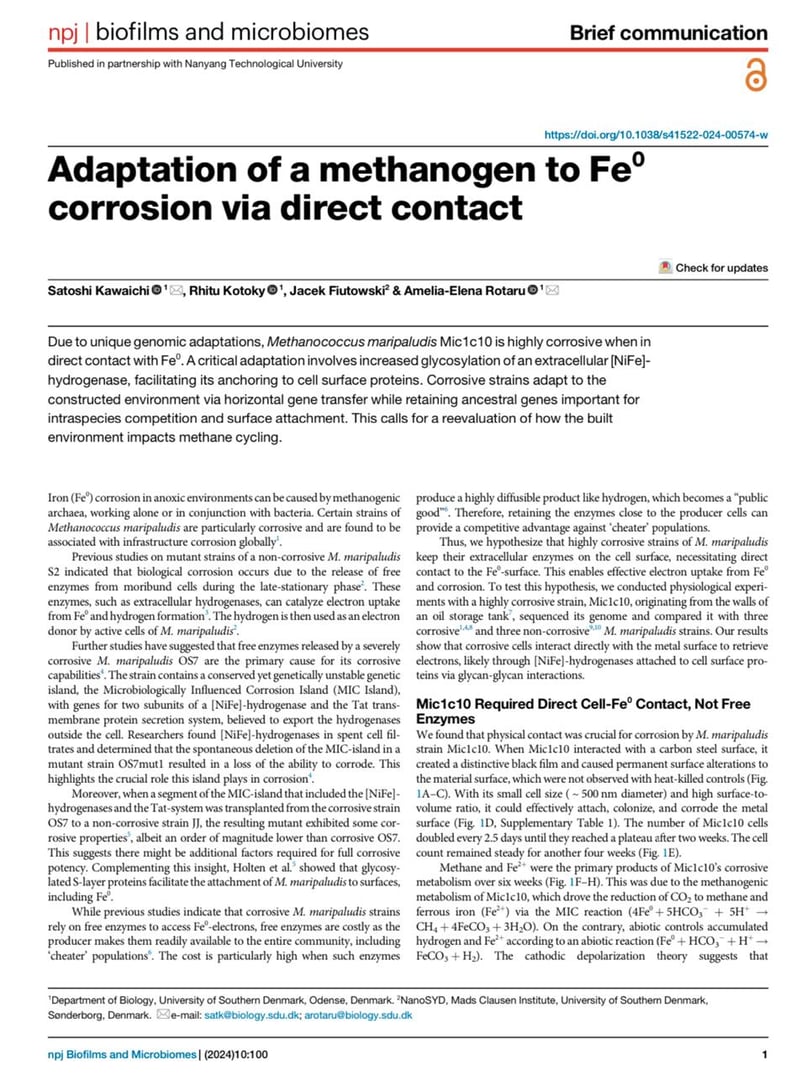Adaptation of a methanogen to Fe0 corrosion via direct contact
The Paper of the Day discusses about the condition when Methanococcus maripaludis strain Mic1c10 is highly corrosive when in direct contact with iron (Fe0). This is due to unique genomic adaptations, including increased glycosylation of an extracellular [NiFe]-hydrogenase that facilitates its anchoring to the cell surface. The corrosive ability of Mic1c10 is not driven by free extracellular enzymes, but rather by surface-bound hydrogenases that enable effective electron uptake from Fe0. Comparative genomics revealed that corrosive strains of M. maripaludis have acquired corrosion-specific gene clusters, likely through horizontal gene transfer, while also retaining ancestral genes important for intraspecies competition and surface attachment. These findings challenge the previous view that free enzymes primarily drive corrosion by Methanococcus and suggest that the built environment can impact methane cycling through the adaptation of corrosive methanogens.


